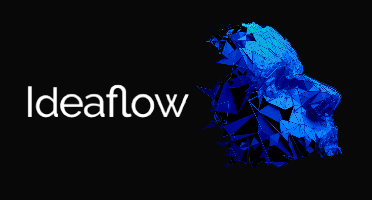
Jacob Cole
Project OwnerGuide Ideaflow development to meet SingularityNET requirements. Coordinate integration with Hermes.
DEEP Connects Bold Ideas to Real World Change and build a better future together.
Coming Soon
Ideaflow.io came from research at the Software Agents and Decentralized Information Groups at MIT (creators of ConceptNet / RDF), and raised over $11M from top VCs including First Round Capital, Naval, and 8VC. Our company mission is to build an open, worldwide, collaborative knowledge graph system, and interfaces to seamlessly interact with it. We're building Ray Kurzweil’s vision for a “shared neocortex in the cloud” that AI’s and humans alike can leverage to augment their intelligence, and to collaborate to solve the world’s hardest problems. We're huge fans of Ben Goertzel's work & are working with the HERMES team on MeTTa/MORK integration. SingularityNET is a natural partnership.
This RFP seeks the development of advanced tools and techniques for interfacing with, refining, and evaluating knowledge graphs that support reasoning in AGI systems. Projects may target any part of the graph lifecycle — from extraction to refinement to benchmarking — and should optionally support symbolic reasoning within the OpenCog Hyperon framework, including compatibility with the MeTTa language and MORK knowledge graph. Bids are expected to range from $10,000 - $200,000.
Partner with Magi / the Neoterics team to contribute to the HERMES RFP. The engagement centers on a flagship integration between the HERMES RFP and Ideaflow providing a human interface to visualize and alter the Neoterics and AIRIS agent showcasing end-to-end knowledge ingestion reasoning and visualization. As the Neoterics and AIRIS agent analyzes a situation to form a plan its knowledge is incomplete and it has unanswered questions. These need to be investigated through curiosity-driven experimentation so its plan must be revised until enough is known to complete or change the agent’s goals. Ideaflow visualizes the agent’s internal process and allows the human to edit it.
Integration Milestone – Stand-up a bi-directional bridge that: - Ingests HERMES artifacts into Ideaflow. - Publishes curated Ideaflow graphs back to HERMES / OpenCog Hyperon. - Reasoning Showcase – Demonstrate an agent that: - Accepts domain knowledge (as Ideaflow graphs). - Reasons over that knowledge inside AtomSpace + Hyperon. - Produces an actionable execution plan as a graph. Visualization – Ensure the resulting plan is explorable in Ideaflow’s interactive UI (nodes edges metadata etc.).
$24,999 USD
End-to-End Flow Works - A goal graph and its supporting knowledge are pulled from Ideaflow, converted to AtomSpace, reasoned over, and returned as an execution-plan graph—all in one CI run with no manual nudges. - Step-One Drill-Down - The returned plan must include Step 1 expanded into at least three valid sub-steps (child nodes) that explicitly reference imported knowledge objects. - Each sub-step carries: owner, dependency, and priority metadata fields. - Data Round-Trip Integrity ≥ 99 % - Hash diff (Ideaflow ⇒ AtomSpace ⇒ Ideaflow) shows ≤ 1 % semantic or structural drift on a 1 k-node test graph. - Time-to-Insight ≤ 30 s - From “Run” click to first graph render in Ideaflow UI. - Qualitative Review ≥ 4 / 5 - Stakeholders rate the clarity and usefulness of the Step-One breakdown in a structured survey (coverage, logical ordering, actionable detail). - Extensibility Hook Present - Codebase contains a documented next_steps() stub proving where additional iterations (Step 2-N expansions) will plug in.
Build the data-movement layer that shuttles HERMES artifacts into—and back out of—Ideaflow’s graph tool-chain supporting streaming to visualize symbolic AI reasoning in real time. Support realtime streaming of goals from the Global Graph into AIRIS agents motivational frameworks. Support imports from various graph data formats – RDF JSON and unstructured formats e.g. text files scientific papers human-made notes and automatically extract graph-like data.
ETL Pipeline – One-shot and batch ingestion of HERMES data into Ideaflow’s native graph schema. • In-scope: full real-time streaming • MORK Bridge – Bidirectional converters between Ideaflow sub-graphs and MORK / AtomSpace atoms. • In-scope: advanced reasoning logic – inference of graph edges both those within HERMES such as causal links and consideration links and external to HERMES e.g. inferring potential drug candidates from biological pathways of a disease. • Visualization Stub – Prototype UI that renders causal statements from HERMES in near-real-time (simple polling). • Out-of-scope: production-grade real-time dashboard.
$25,001 USD
DELIVERABLES 1. Batch ETL Scripts • Python/Go adapters pull HERMES JSON, transform to Ideaflow nodes/edges, and write to the graph store. • ≥ 90 % of the test corpus ingests cleanly; CI job passes. 2. MORK Interface Library • Functions to serialize Ideaflow sub-graphs → MORK atoms and deserialize back. • Round-trip test shows no semantic drift. 3. Async Processing Queue • Lightweight message queue (e.g., Redis) so ETL jobs run asynchronously now and can switch to streaming later. 4. Visualization Prototype • Minimal web component that updates every 5 seconds, displaying causal statements as a node-link diagram. • Accepts MeTTa-compatible triples. 5. Technical Note (≈ 2 pages) • Architecture diagram, API spec, and punch-list for turning “near-real-time” into true streaming in Phase 2.
Reviews & Ratings
Please create account or login to write a review and rate.
Check back later by refreshing the page.
© 2025 Deep Funding
Join the Discussion (0)
Please create account or login to post comments.